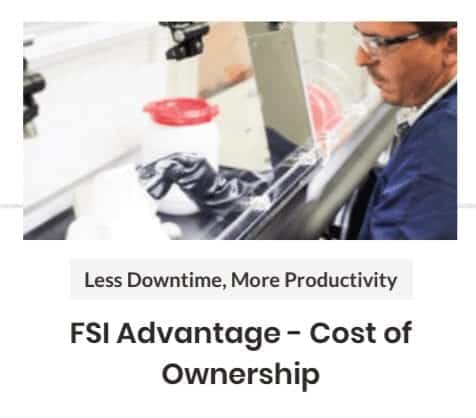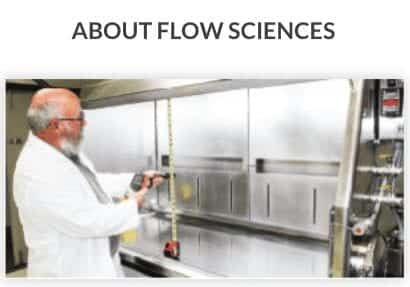Flow Sciences, a leading provider of containment systems for laboratory, pilot plant, and manufacturing facilities, delivers low cost of ownership and high return on investment. By utilizing sophisticated engineering and design into the construction of the systems, they are able to achieve less lab downtime, more consistent results, no cross-contamination, and less energy consumption.
Q: How does Flow Sciences, Inc. (FSI) achieve lower cost of ownership?
A:All aspects of the systems are engineered to ensure consistent containment for the life of the enclosure, including materials of construction and modular design. To begin, containment and safety is more important than filter change sales, and the 4” HEPA filters provide less lab downtime to our customers, besides the additional costs of the replacement filter and certification, which is timely and expensive.
Q: What HEPA filters does FSI use, and why?
A:The FSI HEPA filters are 4” pleated with a filter life of 4-5 years, eliminating the need to replace thinner filters frequently. The airflow inside of the unit is most important. Often with filters you will see powder loading in a “hot spot” if the particulate is not spread evenly across the filter surface. FSI hoods are designed with airfoils and internal plenums (baffles) to direct laminar airflow across the work surface. However, the ceiling plenum itself evenly distributes the powder across the area of the filter. When this occurs, the filter loads evenly and lasts much longer.
Q: Why is laminar airflow on the work surface important to cost of ownership?
A:Many powder applications rely on balance stability and accurate weighing to ensure reproducibility and results, resulting in less process time, which means less cost per sample. Laminar airflow allows for improved balance stability and consistent sample weighing and manipulation. Balances and other equipment may also be affected by vibration, which is a major concern in safety hoods.
Q: How does Flow Sciences reduce the vibration on the work surface of the hood?
A:Engineering controls isolate the vibration of the fan and create a stable work surface for balances and equipment, as well as the area around the enclosure if it is on a work bench. We have videos on our website showing the testing with an accelerometer as well as balance stability to 6 or 7 places depending on the system.
Q: Does laminar airflow require more air volume?
A: Quite the inverse, actually. FSI hoods lead the industry in containment while requiring less air and lower required face velocities. Less air means less energy and results in cost savings, especially when the hood is connected to house exhaust.





